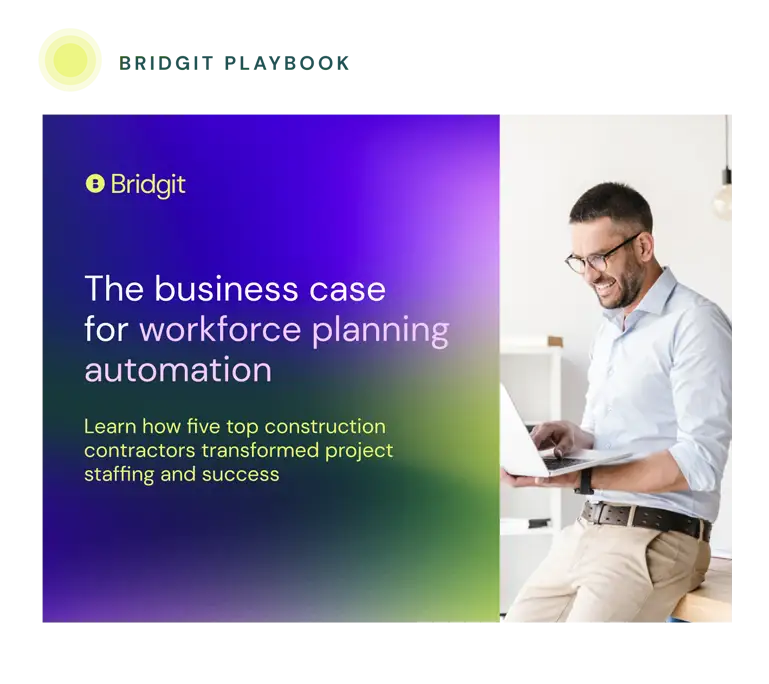Table of Contents
We talk a lot about construction lagging behind other industries regarding technology adoption. I’m not so sure that’s the case anymore. At ENR Futuretech this year, I was struck by the sheer number of software vendors pitching their solutions. Dozens of booths promise greater efficiency, streamlined processes, and the potential to revolutionize how we approach construction. The rapid proliferation of software was both impressive and overwhelming.
Across the construction industry, the last few years have witnessed an explosion of software solutions. From advanced project management software to AI-powered safety analytics, technology has promised to do everything but actually build.
I’d argue this surge comes with a shadow: tech fatigue. This overwhelming feeling of being inundated with too much technology too quickly.
I. An analogy: EHRs in healthcare
The buzz around technology isn’t new or restricted to construction. To grasp the potential implications for our industry, it’s useful to compare it to another that experienced tech fatigue, like the healthcare sector’s experience with Electronic Health Records or EHRs.
EHRs are digital versions of patients’ paper charts, encompassing a view of a patient’s medical history, diagnoses, medications, treatment plans, immunization dates, laboratory results, and more. They aren’t just a singular patient record but a real-time record that makes information available to authorized users across different healthcare settings.
Driven by a goal to modernize the U.S. healthcare system, the rapid introduction of EHRs was notably propelled by the Health Information Technology for Economic and Clinical Health (HITECH) Act. Enacted in 2009, this legislation aimed to stimulate the adoption and standardization of EHRs. The law funneled billions of dollars into incentives for healthcare professionals and hospitals to adopt and use them.
The promise was alluring: transitioning to EHRs would lead to more streamlined healthcare processes, reduced medical errors, and improved patient outcomes. On paper, this digital shift would revolutionize the patient-doctor interaction.
The reality was more complicated. As healthcare institutions scrambled to implement these systems, they confronted challenges. The software was often clunky, non-intuitive, and time-consuming. Poor integration between different EHR systems leads to fragmented patient data. The continuous training and retraining with every software update added to the strain on healthcare professionals.
Over time, what was initially viewed as a promising tool to enhance care became a source of frustration. This feeling of weariness, compounded by the perpetual need to adjust to new digital workflows, is a textbook definition of tech fatigue.
II. Causes of Tech Fatigue
1. Training and learning curves:
Time is money is the first commandment of business. With every new piece of technology introduced, there’s a need for training. Each software has its nuances and learning curve. While training is necessary, the constant influx of new technology leads to endless workshops, webinars, and tutorial sessions.
Beyond the tangible costs of these training sessions, there’s the hidden price: the time staff spend away from their primary roles. This constant need for training exerts a cognitive load on employees, making it challenging for them to master one system before another emerges.
2. Integration challenges:
One of the specific problems in construction technology now is the lack of integration between point solutions. In an ideal world, every piece of tech would “speak” to the pre-existing systems, ensuring data exchange and operations fluidity. Obviously, this isn’t the case. Some software makes integrating extremely difficult, and some companies lie about having an “open” API.
For construction, having a tech stack that doesn’t integrate means duplicated data entry, report discrepancies, or even financial miscalculations. All of which can lead to smaller profit margins.
3. Sheer volume of solutions:
The construction industry’s tech landscape has undeniably become crowded. The abundance of options inevitably leads to analysis paralysis. Decision-makers can become so overwhelmed by the sheer number of choices available that selecting the “right” technology becomes daunting.
Every vendor claims superiority, making genuine comparisons challenging. Amidst these options, there is a risk of rushing technology adoption due to decision fatigue or delaying adoption altogether, waiting for the elusive perfect solution.
4. Misaligned expectations:
A sneaky but impactful cause of tech fatigue is the misalignment between what tech companies promise and what they deliver. In a rush to secure a market foothold, some vendors are tempted to oversell their software’s capabilities.
Consider a construction company that invests in software that promises to be a solution to a major problem. A few months after signing the contract,, they realize it lacks essential features or is riddled with bugs.
Experiences like this don’t just result in financial losses; they erode the trust in tech vendors altogether. Over time, this holds back innovation in the construction industry and in the technology whose ambition it is to revolutionize it.

Automate your workforce planning and create a competitive advantage
Download our playbook to learn how five top contractors have transformed their workforce planning process, improved project staffing, and fostered a more collaborative planning process at the same time.
III. The consequences of tech fatigue
With the causes of tech fatigue being clear, what are the consequences?
The paradox in construction is that the tools introduced to streamline processes and expedite tasks can inadvertently lead to delays and confusion.
Drawing on the earlier analogy, many doctors spent more time entering data into EHR systems than interacting with patients. This counterintuitive dip in productivity emerged not from the lack of technology but rather from its complexities.
For construction, this is an even tighter Gordian Knot. One of the reasons it’s difficult to create effective software for construction is because the very act of construction, especially at a large scale, is one of the most complex actions humans do.
One string of logic from this point tells us that the technology will develop the same level of complexity. In other words, the job tells us what the software will be. This is bad news for construction executives buying software; it means that your productivity will be stuck in place, especially as you stack more complex software systems up.
Cutting this Gordian Knot is possible, but vendors do it daily. But the trouble emerges with the sheer number of vendors and misaligned expectations I discussed earlier.
Erosion of trust can happen quickly because, frankly, the software is expensive. The industry’s faith in technological solutions diminishes with each experience of an overhyped tool that underperforms. Additionally, if you’re surrounded by dozens of solutions, all promising the same things, it won’t breed relief or excitement but frustration and anxiety.
Despite tech fatigue being a potential problem, it doesn’t mean construction companies should shy away from innovation or that tech companies should throw their hands up out of frustration with challenging sales cycles. Tech fatigue highlights the responsibilities both buyers and sellers need to take.
Vendors need to understand that construction innovation isn’t a quick buck; contractors have a lot at stake. Instead of over-promising, the focus needs to be on the customer, how they interact with your solution, and how your solution fits into the greater complexity of a construction project.
Construction companies need to double down on due diligence internally and externally. There needs to be a clear understanding of the problem at hand and what it would look like if it were solved. From there, software vendors need to be thoroughly vetted by all key stakeholders, especially regarding their limitations on solving your problems.
Yes, this will be hard for vendors; it’s supposed to be. It forces products to be better and for users to be better supported. More than anything, it actually solves problems, and nothing defeats tech fatigue like the excitement of not having a problem anymore.


